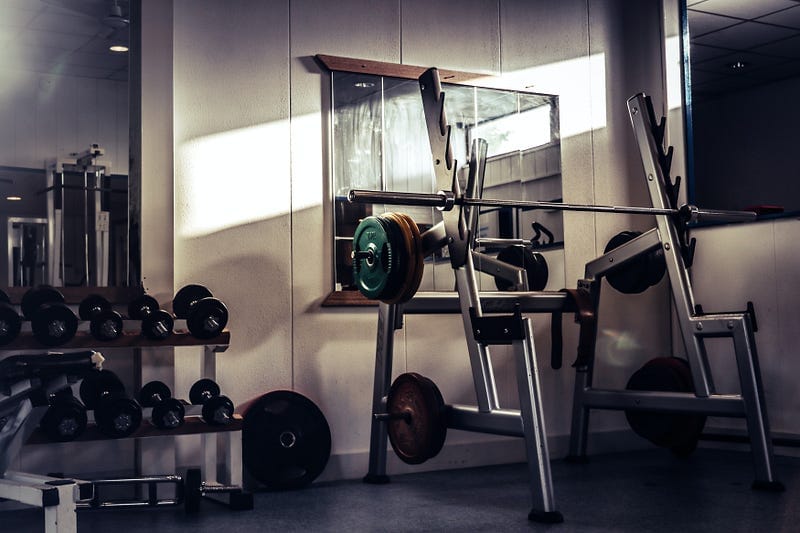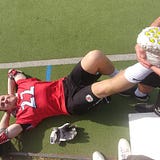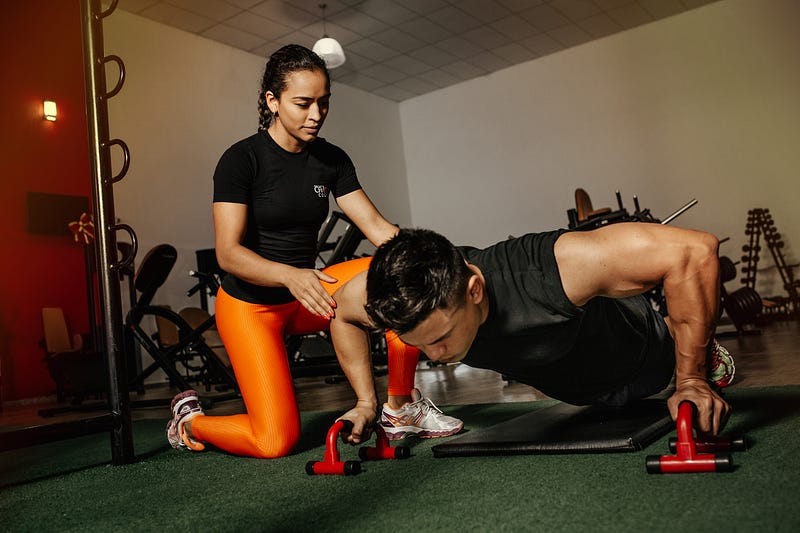Tired of getting injured? Get a strength coach. Now.
There is no shortcut to success — but getting a strength coach might be the next closest thing.

“I just have weak ankles. There’s not much you can do about it.”
That’s at least what I thought, every time I tore the ligaments in my ankle. A total of 13 times throughout my career. I even published a post about it:

To quote: “Now, 11 years later, I’ve had my fair share of sports injuries: 12 torn ligaments (6 in each ankle), 3 concussions, knee ligament issues, blown out cartilage in my wrist from doing too many pushups, a partially torn quadriceps, the list goes on and on. And, two weeks ago, I added another undisclosed foot injury. In my 9 year lacrosse career, I think I’ve sat out a solid 2–3 years simply with injuries.”
That was 2 years ago. Ever since, I have not had any injury problems, and have maybe missed 2–3 weeks with minor problems.
How did I do it? Simple. I got a strength coach.
I have to admit this was more of an accident. My girlfriend at the time pointed out that I might want to talk to the Rugby strength & conditioning coaches at our Lacrosse club — so I did. Turns out, they were interested in working with an athlete from a different sport, and clearly saw potential to help me.
“Your feet are weak as f***.”
Initially, my coach ran a few tests with me, and the first thing he said was: “your feet are weak as f***.” Gee, thanks. But he did indeed point out the problem right away — my feet (and ankles) were weak. So was the rest of my lower body. And my mobility was horrible. But that was about to change.
Since then, I …
- went from 78kg to 84kg bodyweight while maintaining the same body fat %
- increased my technique and form significantly (oh, the things you don’t know when you’re ignorant)
- got stronger in every area, but particularly with my squats & deadlifts
- managed to be able to touch my toes without bending the knees
- went from being cut in the national team open tryouts in 2017 to being part of the 37-man roster of the national team (and potentially the team representing Germany at the European Championships in 2021)
But most of all, I did not have to suffer again and again through the woes of being injured. The tears, the frustration of not being able to play, the grind to get back to where you were 3 months ago were gone.
For me, getting a strength coach was a true life-changer.
Let’s be honest: I couldn’t have done this on my own. Because if I could have, I would have done it way earlier.
Back then, I was one of those guys who would never solicit feedback in the gym, because I was afraid that my bubble of “knowing everything already” might burst. I was one of those guys who thought watching a video on YouTube is enough to know what proper form really is.
Well, I was also one of these guys who didn’t get stronger and constantly got injured.
Fortunately, that’s not the case anymore.

What it’s like to have a strength coach
To shed some light on what it’s like to have a strength coach, let me walk through the process that we use to work together.
Initially, we had a one-hour chat about what I wanted to achieve and why I want to train. For me, the main goal was to simply not have any ankle injuries anymore, with the secondary objective of becoming a lot stronger.
Afterwards, we ran diagnostics. I jumped off a step and did an overhead squat — and that gave him enough information to put together a workout program, along with the parameters that he already knew about me.
Every program lasts for six weeks. I document my weight and rep numbers meticulously with pen & paper, and send them back to him so he can see (or not see) my progress.
Also, I film myself while lifting, and send him videos of me doing the exercise. This is super helpful: by just watching yourself, you can already see a lot of mistakes that you’re making. Usually, I film myself on the second set already so I can adjust my technique. My coach only receives the video of the last set, as that’s the one that is most likely to have subpar technique. If your form is still on point for the last set, chances are it was on point for the sets before too.
After 3–6 (or however long it takes until progress slows down) weeks, we hop on a quick call to discuss the next steps, the goals for the next program, and take it from there. This process repeats over and over again.
Note that we don’t train together — we don’t even live in the same city.
All of this takes place online.
How does all this relate to injuries?
Couldn’t it have been pure accident that I just didn’t get injured anymore?
Statistically, yes. But science says there is more to it: “Despite noticeable differences in populations and interventions, strength training attained consistently favorable results across four different acute and overuse injury outcomes”, reads a paper comparing several studies on strength training for injury prevention.
Which intuitively makes sense. Being strong equals being less prone to injury. “Strong” does not refer to the amount of muscle mass that you have, but to the amount of force you can produce — which requires you to have muscles, but also to have the nerves around it so they can coordinate your muscles properly.
A stronger, faster nervous system in turn allows your body to react faster when in a potentially injury-inducing situation, such as twisting your ankle. If the muscles around your ankles are strong enough and react fast enough to absorb the force you generate when changing direction, nothing will happen; but if they aren’t, your ligaments will compensate for that, leading to injury.
That’s just the tip of the iceberg. There is so much more to injury prevention: structural balance, mobility, symmetry of your muscles and their antagonists, general body makeup and overall health. And warming up properly.
While you could hypothetically figure out all this on your own, chances are having a strength coach would significantly increase your chances of success. After all, they’ve studied their craft for a long time, while we’ve just been watching YouTube.
Call to action
Chances are you don’t have a strength coach yet. Otherwise you probably wouldn’t be reading this.
Why not?
Probably it’s at least one of these two reasons:
- Having a strength coach or personal trainer is simply too expensive
- You don’t know where to get one
We’re currently working on a business that solves these two problems: getting you a individualized workout plans and form feedback for significantly less than a real trainer would cost.
Right now, we’re looking for people who want to help us co-create this product. There are still many questions to be answered, features to be built and workouts to be done — and we can do all that only by testing a prototype. With you.
So if you’re interested in preventing future injuries, getting stronger and becoming an overall better athlete, sign up here to be among the first to get access. Don’t worry, it won’t take longer than 2 minutes. 😄
I’ll be in touch personally very soon.
In the meantime, check out my coach’s Instagram: @joblinstrength. I learn a lot from every single thing he posts.
Oh, and: here’s the form again:
Dominik Nitsch Newsletter
Join the newsletter to receive the latest updates in your inbox.


